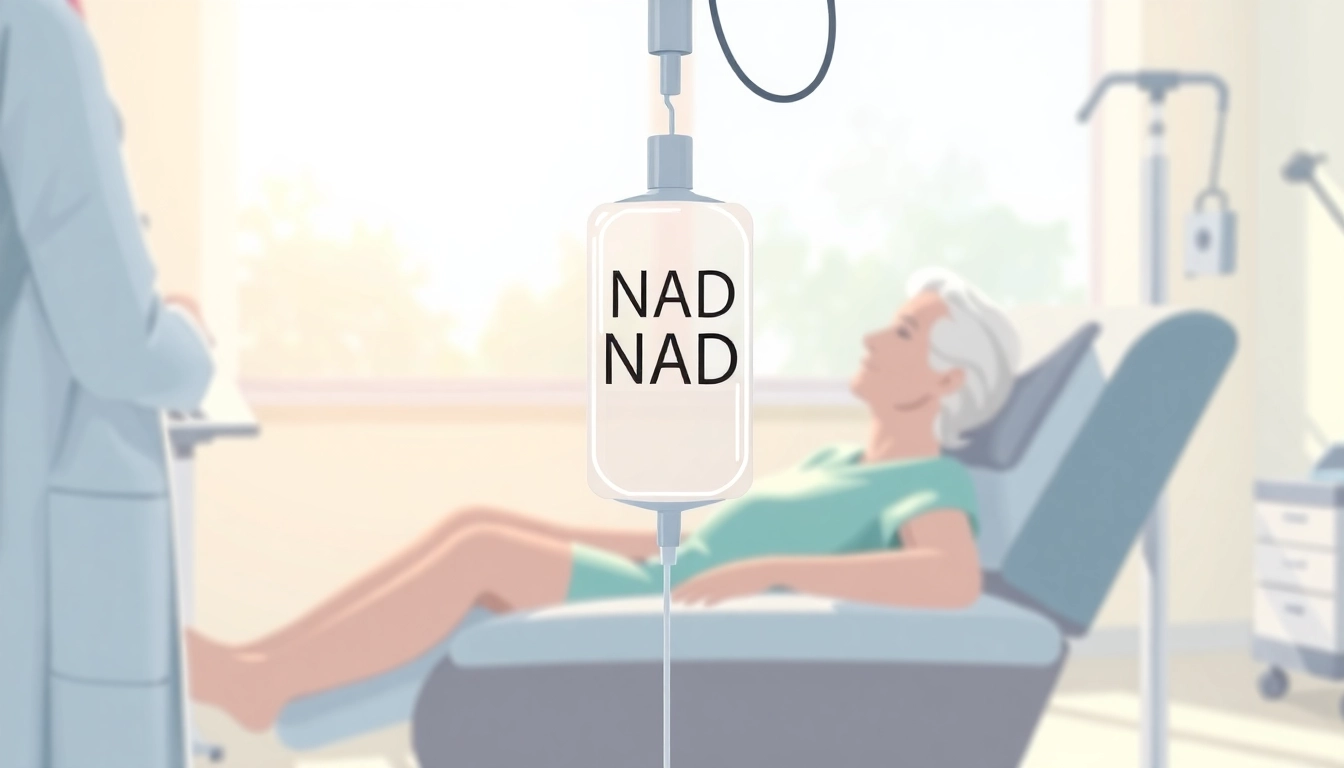
Introduction to NAD IV Therapy
Nicotinamide adenine dinucleotide (NAD) has gained significant attention in recent years, particularly within the realms of health, wellness, and anti-aging treatments. As a vital coenzyme found in all living cells, NAD plays a critical role in energy production, DNA repair, and cell metabolism. With the advent of NAD IV therapy, individuals seeking to enhance their physical and mental wellbeing have turned to this innovative treatment. However, before considering this therapy, it’s essential to understand the nad iv therapy side effects and implications that accompany it.
What is NAD?
NAD is an essential coenzyme involved in multiple biological processes. It exists in two forms: NAD+ and NADH, where the former is the oxidized form, and the latter is the reduced form. NAD+ helps in redox reactions, transferring electrons in metabolic pathways, which fuel the production of ATP, the primary energy currency of cells. Beyond energy metabolism, NAD also plays crucial roles in DNA repair, cellular stress responses, and the regulation of gene expression. The levels of NAD in the body naturally decline with age, which can contribute to various age-related dysfunctions and diseases.
The process of NAD IV therapy
NAD IV therapy involves the infusion of NAD directly into the bloodstream through an intravenous (IV) drip. This method allows for higher bioavailability and faster absorption compared to oral supplements, where the digestive system may limit the amount that reaches circulation. A typical session can last anywhere from 30 minutes to several hours, depending on the individual’s treatment plan and intended effects. Patients often receive a series of treatments over a specified period to experience optimal benefits, which may include enhanced mental clarity, improved energy levels, and overall vitality.
Potential benefits of NAD IV therapy
NAD IV therapy has been associated with several potential benefits, which include:
- Increased Energy Levels: Many patients report feeling more energetic following treatment, attributing this to improved metabolic function.
- Cognitive Enhancement: Research suggests that NAD may support cognitive function and memory, making it beneficial for individuals experiencing brain fog or cognitive decline.
- Detoxification: NAD IV therapy may support the body’s detoxification processes, promoting overall health.
- Anti-Aging Effects: Given its role in DNA repair, some proponents believe NAD can have anti-aging effects, rejuvenating cells and promoting longevity.
- Support for Addiction Recovery: Some studies indicate that NAD IV therapy may aid in reducing cravings and withdrawal symptoms in individuals recovering from substance abuse.
NAD IV Therapy Side Effects Explained
While NAD IV therapy may offer numerous benefits, it’s crucial to consider the nad iv therapy side effects that may arise during or after treatment. Understanding these potential side effects can help patients make informed decisions and prepare for their sessions effectively.
Common NAD IV therapy side effects
The side effects of NAD IV therapy can vary by individual, but there are several commonly reported symptoms that patients may experience:
- Flushing: One of the most frequently mentioned side effects is flushing, which can make the skin feel warm and cause reddening of the face and body.
- Nausea: Some patients report feelings of nausea during or after treatment, which can be bothersome but is generally temporary.
- Headaches: Headaches may occur, likely due to changes in neurotransmitter levels or reactions to the infusion process.
- Fatigue: While many report increased energy, others may feel fatigued following treatment as their body adjusts.
- Dizziness: This can happen during the infusion, particularly if the treatment is administered too quickly.
Less common but serious side effects
Though rarer, some individuals may experience more serious side effects. These include:
- Respiratory Issues: Difficulty breathing or tightness in the chest may occur in sensitive individuals.
- Anaphylaxis: In extremely rare instances, severe allergic reactions may happen, leading to anaphylaxis, which is a medical emergency.
- Electrolyte Imbalance: The infusion process can lead to shifts in electrolyte levels, which may necessitate monitoring during treatment.
- Injection Site Reactions: Pain, swelling, or redness at the injection site may occur.
How long do NAD IV therapy side effects last?
The duration of side effects from NAD IV therapy can vary widely based on the individual’s health status, treatment dosage, and other factors. Common side effects like flushing and nausea typically resolve within a few hours post-treatment. However, more serious side effects may require immediate medical assessment. It’s essential for patients to communicate openly with healthcare providers about their experiences during and after treatment to optimize their care.
Managing NAD IV Therapy Side Effects
Proactive management of side effects can enhance the overall experience of NAD IV therapy. Here are some strategies to consider:
Pre-treatment consultation tips
Before beginning NAD IV therapy, patients should engage in a thorough consultation with a healthcare provider. Here are some essential tips for this discussion:
- Current Health Status: Disclose any underlying medical conditions, medications, or allergies to ensure safety.
- Setting Expectations: Discuss potential benefits and side effects to create realistic treatment expectations.
- Personal Goals: Clearly communicate personal health goals and desired outcomes to tailor the treatment approach.
Post-treatment care recommendations
After receiving NAD IV therapy, follow these care recommendations to mitigate side effects:
- Hydration: Drink plenty of water to keep the body hydrated and help flush out toxins.
- Rest: Allow time for recovery, especially if experiencing fatigue or headaches.
- Monitor Symptoms: Keep track of any ongoing side effects and report them to a healthcare provider if they persist.
When to seek medical advice
Understanding when to seek medical help is critical for safety:
- If severe headaches or dizziness occur that do not resolve with rest.
- Signs of an allergic reaction, such as hives, swelling, or difficulty breathing.
- Any ongoing discomfort or concerning symptoms that do not improve after treatment.
Frequently Asked Questions about NAD IV Therapy
Is NAD IV therapy safe for everyone?
While NAD IV therapy is generally considered safe, it may not be suitable for everyone. Individuals with certain medical conditions, pregnant or breastfeeding women, and those with specific allergies should consult their healthcare provider before undergoing treatment.
How does age affect NAD IV therapy side effects?
Age can influence the response to NAD IV therapy. Older adults may be more susceptible to side effects due to altered metabolism or pre-existing health conditions. A tailored approach to dosages and treatment regimens is often necessary for elderly patients.
What to discuss with your healthcare provider
Before starting NAD IV therapy, it is vital to have open communication with your healthcare provider. Discuss your health history, lifestyle factors, and any specific concerns regarding potential side effects to ensure a safe and effective treatment path.
Conclusion: weighing the risks and benefits
Summary of key takeaways
NAD IV therapy presents an exciting opportunity for individuals seeking to enhance their health, energy levels, and mental clarity. However, it is essential to remain informed about potential side effects, both common and rare, to manage expectations and health outcomes effectively.
Personalizing your NAD IV therapy experience
Tailoring NAD IV therapy to fit individual needs is crucial for maximizing benefits while minimizing adverse effects. Engaging in open dialogues with healthcare professionals will allow for personalized treatment plans that address specific health goals and concerns.
Encouraging informed decisions about treatment
Patients considering NAD IV therapy should weigh the potential benefits against the risks of side effects. With adequate information and professional guidance, individuals can make informed decisions that align with their health aspirations.







